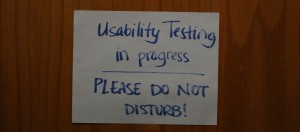One of your primary responsibilities as a leader is to motivate employees so they make the company’s goals their own. This not only aligns the team and ensures everyone is rowing their oars in the same direction, but it also generates better attitude, better performance and ultimately a better bottom line.
As you probably already know, the number one way to motivate employees is with incentives. That said, many business owners are very hesitant to implement incentive programs. It’s very normal to worry about the ROI on incentives and question why you should have to incentivize employees when they are already being paid to do the job in question. Many employers have also been burned by incentive programs that have failed to motivate in the past.
As with any business decision, creating a motivation strategy requires due diligence as well as a bit of trial and error. To save you from that kind of legwork, we’ve put together this resource on how to create an employee motivation strategy that actually works.
- No two employees are made the same, nor should their incentives be.
Different employees are motivated by different incentives – some seek bonuses or promotions, others are simply driven by recognition. It’s up to you to discover what best motivates the key profit-drivers on your team. A good way to gather this information is in one-to-one meetings as well as through trial and error. Create a list of different motivators – commissions, bonuses, contests, etc. – and track how well they influence employee performance.
- Be transparent about measuring employee performance.Even if your initial motivation strategy seems effective, it’s a good idea to change it up regularly to foster a Hawthorne effect in your business. In case you’ve never heard of it, the Hawthorne effect was first coined by Henry A. Landsberger after conducting a study measuring the impact of office lighting on productivity.Landsberger’s team increased lighting in a Western Electric factory outside Chicago and noticed a boost in productivity. They increased lighting again and noticed another boost in productivity. But then they brought the lighting down and still noticed another increase in productivity. After interviewing the subjects, Landsberger’s team found the employees’ increased productivity was more a result of the knowledge of being measured than the impact of light.
- Make sure all aspects of the incentive plan are clear to employees.Employees will not be motivated by incentive programs they don’t understand or can’t track. Create a written plan for the incentive program that all eligible employees have access to. Encourage them to follow up with any questions or concerns.The incentive plan must be measurable, and the employee must be able to regularly check in on his or her status. Employees need to understand how what they do every day can bring them closer to their incentive goals and, ultimately, the company’s goals.
- Timing is key.As with all things business, strategy is key to your success with employee incentives. Through trial and error, you’ll be able to identify an ideal frequency for running incentives, so they continue to boost performance without becoming an expected form of compensation.
- Holiday bonuses are a dated strategy.Many companies give out holiday bonuses based on annual profits. While this is a nice gesture, it blurs the line between bonus and gift and falls into the “expected” incentive and ceases to motivate. This kind of bonus also creates too large of a distance between the employee’s day-to-day performance and the reward.
- Aim for quarterly incentives.Quarterly incentives close the gap between motivation and reward. In the first month of the quarter, you distribute bonuses from the last quarter, which can be an excellent motivator. During the second month, employees define their next goal and put the steps in place to achieve it. Month three, employees push even harder to make the goal. Then you repeat the cycle.
- Don’t let your incentive plan grow stale.Even your best (perhaps especially your best) employees will learn how to take advantage of your incentive program over time. It’s up to your management team to make sure that incentive programs are still motivating goals and not devolving into an expensive entitlement.Every incentive should have a specific timeline and be intended to motivate a specific goal, and this should be clearly communicated to employees. Once the goal and timeline are reached a new incentive program must be developed.Keep your incentive strategy agile. Try longer and shorter term approaches as well as monetary and non-monetary incentives. Not only will this help you measure what works for different individuals, but it will keep incentives interesting and motivating for employees.
Sure, it would be a lot more convenient if there was a one-size-fits-all strategy for employee motivation, but employees are highly individual and their incentive programs should be too. Begin by taking the time to understand what motivates the people who drive your business’s bottom line, then adapt your regularly for continuous growth.
The goal of employee incentives is to empower team members to become leaders of their own positions and value company wins as their own. Creating an effective employee motivation strategy will turn your employees into profit-driving performers, while increasing their engagement. Get started with these seven tips and don’t forget to adapt, adapt, adapt!
Business & Finance Articles on Business 2 Community(55)






